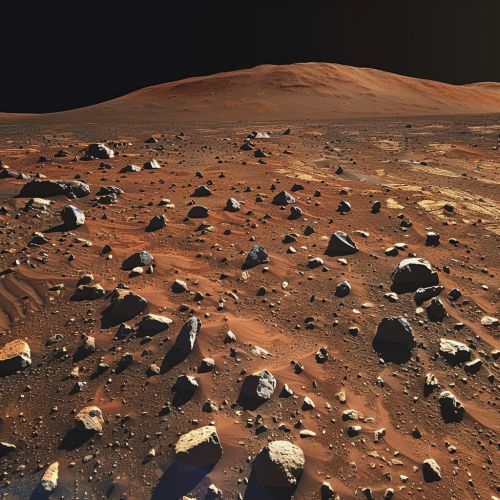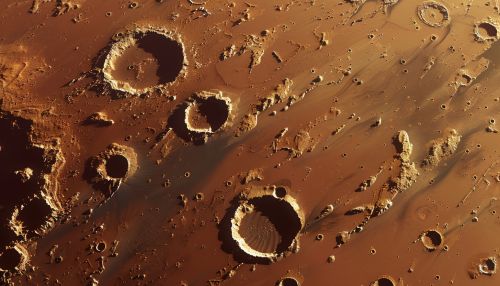Mars Resources
Introduction
Mars is the fourth planet from the Sun in our Solar System, and it is often referred to as the "Red Planet" due to its reddish appearance. Mars is a terrestrial planet with a thin atmosphere, and it has surface features both similar to both Earth and the Moon. The exploration of Mars has been an important part of the space exploration programs of various countries, particularly the United States. This article will focus on the resources that are available on Mars and their potential uses.


Geological Resources
Mars is rich in geological resources, many of which could be utilized for future human missions or colonization efforts. The Martian surface is primarily composed of basalt, a type of volcanic rock, and its soil contains iron, magnesium, aluminum, calcium, and potassium. These elements could potentially be used for construction materials, manufacturing, and life support systems.
One of the most significant geological resources on Mars is water. While the Martian surface is extremely dry, there is evidence of large quantities of water ice in the planet's polar ice caps and below its surface. This water could be used for drinking, growing food, and producing oxygen for breathing. Additionally, water can be broken down into hydrogen and oxygen through electrolysis, providing fuel for rockets.
Atmospheric Resources
The atmosphere of Mars is very thin and is composed mostly of carbon dioxide (95%), with traces of nitrogen and argon. The carbon dioxide in the Martian atmosphere can be used to produce methane and oxygen, which are key components of rocket fuel. This process, known as In-Situ Resource Utilization (ISRU), could significantly reduce the amount of supplies that need to be brought from Earth for a Mars mission.
Energy Resources
Mars receives less sunlight than Earth, but it still receives enough to make solar power a viable energy source. Solar panels could be used to power equipment and habitats on Mars. Additionally, the temperature difference between the day and night on Mars could potentially be used to generate electricity through thermoelectric materials.
There is also the potential for nuclear power on Mars. Radioactive isotopes, such as plutonium-238, could be used to generate heat and electricity for long-duration missions or permanent settlements.
Potential for In-Situ Resource Utilization
In-Situ Resource Utilization (ISRU) is the practice of using resources found or manufactured on other astronomical objects to replace materials that would otherwise be brought from Earth. ISRU can provide significant cost savings and increase the feasibility of long-duration space missions.
On Mars, ISRU could be used to produce rocket fuel, breathable air, and water. The Mars Oxygen In-Situ Resource Utilization Experiment (MOXIE), a technology demonstration on the Mars 2020 rover mission, is designed to test a way for future human explorers to produce oxygen from the Martian atmosphere for breathing and for making rocket fuel.
Challenges and Limitations
While Mars has many resources that could potentially be utilized, there are also significant challenges and limitations. The Martian environment is harsh, with extremely cold temperatures, low atmospheric pressure, and high levels of radiation. These conditions present challenges for human survival and for the operation of equipment.
Additionally, while Mars has many of the same elements as Earth, they are not always in the same form or abundance. For example, while Mars has a lot of iron, it is in the form of iron oxide (rust), which is more difficult to process into a usable form than the iron ore found on Earth.
See Also
Colonization of Mars Terraforming of Mars Mars Direct Mars to Stay Mars One
